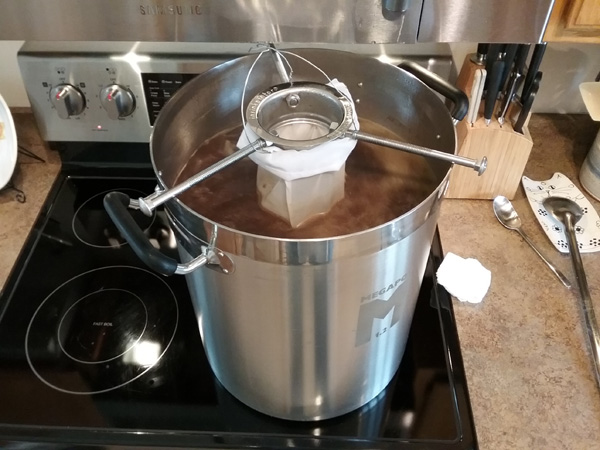For those who do not use a dedicated electric setup...
Looking to get ideas on changing my cold weather brew days. Up until my latest brew, I brewed in the kitchen on a stove. For extract it's not really a problem, but all grain/full boils take forever. I have a propane burner which I used for the first time for my last batch, but now that we are in full winter mode, I am not looking forward to brewing outside.
For a batch I did back in September in the kitchen, I split the boil into 2 kettles and then combined them when the smaller kettle was close to boiling, but this is annoying and a little dangerous.
For my latest batch, I mashed in the kitchen, then brought 6.5 gallons down 2 sets of stairs (in 2 separate kettles) to my garage to boil on a kettle, which wasn't fun.
I am considering picking up a heating element to supplement my stove to brew indoors December to April. Brewhardware has those Hot Rod's for around $140, just need to install a GCFI in my kitchen. Also thinking of possibly going all electric later this year.
How do you guys brew that live in the northern US, or anywhere when it's cold? Does the cold air further delay boil time, making indoors ideal?
Looking to get ideas on changing my cold weather brew days. Up until my latest brew, I brewed in the kitchen on a stove. For extract it's not really a problem, but all grain/full boils take forever. I have a propane burner which I used for the first time for my last batch, but now that we are in full winter mode, I am not looking forward to brewing outside.
For a batch I did back in September in the kitchen, I split the boil into 2 kettles and then combined them when the smaller kettle was close to boiling, but this is annoying and a little dangerous.
For my latest batch, I mashed in the kitchen, then brought 6.5 gallons down 2 sets of stairs (in 2 separate kettles) to my garage to boil on a kettle, which wasn't fun.
I am considering picking up a heating element to supplement my stove to brew indoors December to April. Brewhardware has those Hot Rod's for around $140, just need to install a GCFI in my kitchen. Also thinking of possibly going all electric later this year.
How do you guys brew that live in the northern US, or anywhere when it's cold? Does the cold air further delay boil time, making indoors ideal?
Last edited:






























![Craft A Brew - Safale BE-256 Yeast - Fermentis - Belgian Ale Dry Yeast - For Belgian & Strong Ales - Ingredients for Home Brewing - Beer Making Supplies - [3 Pack]](https://m.media-amazon.com/images/I/51bcKEwQmWL._SL500_.jpg)




























